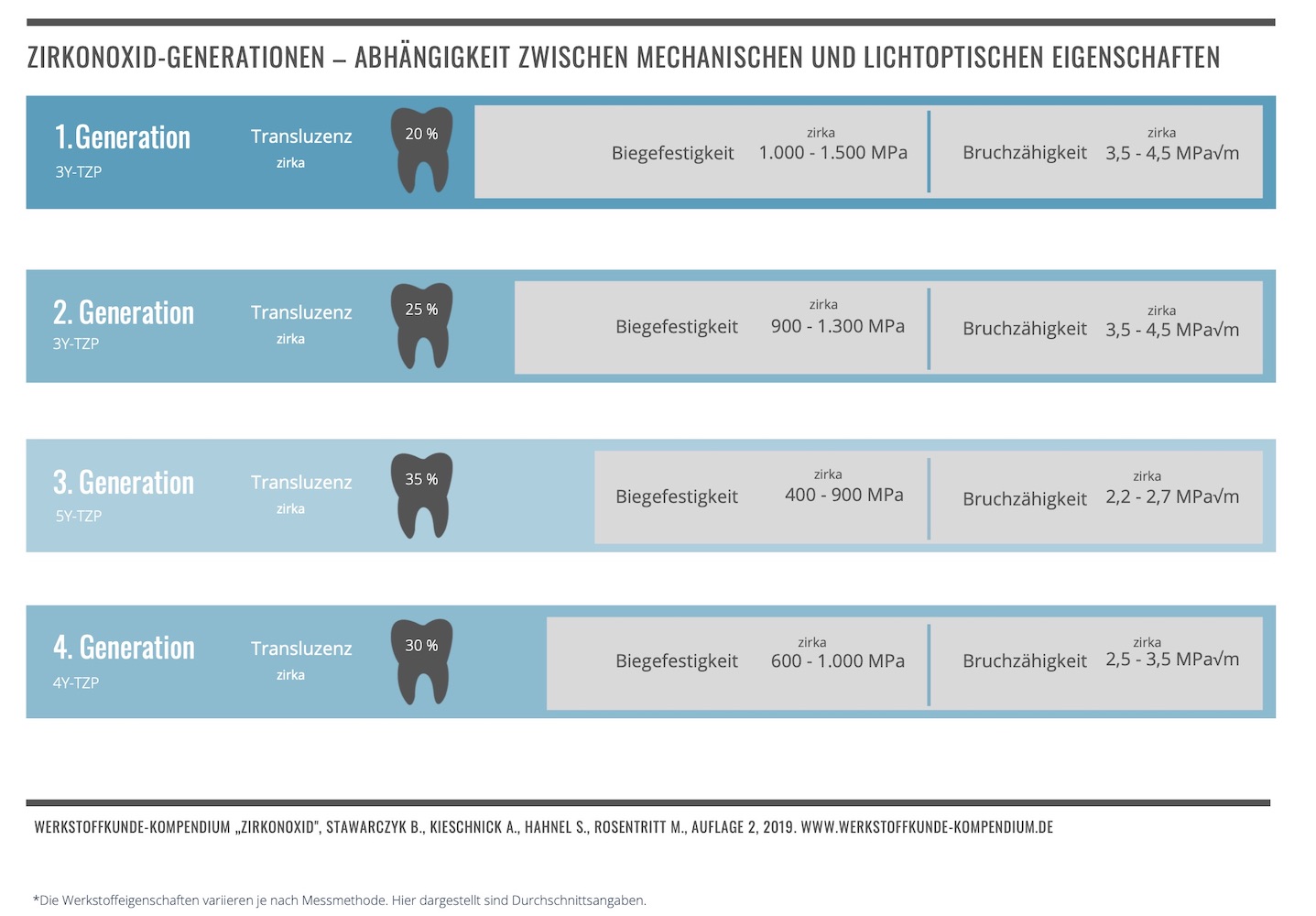
Zirconia was the focus of the second TEAM Talk of the EADT e.V.. The new interactive online format serves the targeted exchange of knowledge. The TEAM Talk comes alive from the participatory principle. The participants are listeners and contributors at the same time. The entertaining online talk is moderated by Carsten Fischer.
Zirconia: Question and conclusion
The second TEAM Talk focused on three central questions concerning the topic “zirconia”, which were analyzed and discussed together with the participants. Here, we have summarized some of the key messages for you to look up. In many cases you will find further links to corresponding articles on our EADT website. These contain literature references to scientific investigations and publications.
Fully booked! Insight into the second TEAM Talk.
Keyword processing: Top 3 errors sources in the dental laboratory and dental practice
As a matter of principle, not all zirconia are the same. Today, we can look back on four generations that differ in terms of mechanical and optical properties. The first two generations are tetragonally stabilized zirconia (3Y-TZP). These exhibit the highest mechanical properties and are frequently used for veneered zirconia frameworks. The 3rd and 4th generations are cubic/tetragonal compounds. The cubic phase in the microstructure makes the zirconia appear more esthetic and translucent, but the mechanical properties are significantly lower. The cubic tetragonal zirconias are mostly used for monolithic restorations. Here, microlayering can be used to further individualize restorations with ceramic masses.
To the point: zirconia ≠ zirconia
Temporary fixation of zirconia restorations
With adequate planning and implementation of the dental treatment (e.g., maxillomandibular relation, framework try-in/fired restoration try-in), a temporary fixation of zirconia restorations can usually be avoided. Temporary or unstable fixations can lead to a potential crack induction and thus a weakening of the restoration. Nevertheless, a temporary fixation would often be possible due to the higher mechanical properties. Especially in “difficult” patient cases, a short phase of testing, a so-called trial run, can be helpful.
To the point: a temporary fixation is theoretically possible.
Abrasion of minimally coated restorations
In vitro investigations report a rapid abrasion of the ceramic masses (microlayering) at the contact points in dependence of the antagonist material. Abrasions at the contact points to the antagonist can also be observed in the clinical practice. Therefore, care must be taken to ensure a smooth surface of the zirconia restoration prior to coating.
To the point: The abrasion resistance depends on the surface and the antagonist material.
Alumina powder air particle abrasion of zirconia
Alumina powder air particle abrasion damages the surface of zirconia. Air particle abrasion with 50 µm alumina powder and a low pressure of maximum 0.5 to 1 bar can be used to clean and improve the wettability of the surface.
To the point: air particle abrasion with low pressure is possible.
Keyword esthetic: full veneering or micro-layering?
Monolithic restorations made of ceramic materials are increasingly in demand. From an economic and technical point of view, the question arises whether ceramic veneers are still up to date or whether the time of ceramic veneers has come to an end. From a scientific point of view, there are various approaches. On the one hand, the stability of the different ceramic materials and their indications as well as their esthetic and optical properties in different oral situations are discussed. On the other hand, fractures (chipping) represent the most frequent complications of ceramic-veneered restorations.
Monolithic restorations made of ceramic materials offer good solutions. Different generations of zirconia allow different options for the finalization. Attention should be paid to the indication recommendation of the manufacturer with regard to the generation of the zirconia. Material thickness and pre-coloring of the zirconia also influence the optical properties. Monolithic restorations often reach their esthetic limits in the anterior region or in difficult oral situations. The esthetic and functional success therefore depends on many factors. The ceramic veneer or rather the “coating concept” must be economically and technologically oriented. Painted, veneered or minimally coated are the different approaches to adapt ceramic materials to the patient’s oral situation. The time required for veneering or painting the ceramic restoration is an important component in the value chain. An alternative to “painting/glazing” or the classic “full veneering” is the “microlayer technology” with a minimal coating of veneering ceramic. Here, a thin (0.2 mm-0.4 mm) ceramic layer is applied.
To the point: Depending on the type of finalization, the abrasion resistance may vary.
Keyword hybrid zirconia: What can we expect from the future?
Hybrid zirconia materials are mixtures of several generations. Here, stability in the lower region and translucency in the occlusal region of the blank are combined within one blank. For example, 3Y-TZP materials are usually selected for stability, while cubic (4Y-TZP or 5Y-TZP) zirconias are used for esthetics. A combination between the cubic/tetragonal materials is also possible, with the translucent variant always positioned in the occlusal region. With these hybrid zirconias, the perfect positioning of the restoration in the blank is crucial in terms of stability. At the present time, the first in vitro investigations are already available, but the scientific evidence is still sparse.
To the point: hybrid zirconia are finely tuned compounds of different zirconia generations.
Werkstoffkunde-Kompendium „Zirkonoxid“
Profundes Wissen rund um moderne Zirkonoxide ist im Werkstoffkunde-Kompendium „Zirkonoxid“ ansprechend zusammengefasst. Die Highlights sind die kompakte Textdarstellung mit animierten Grafiken, weiterführenden Informationen, Videos und Bildgalerien. Zudem ergänzt ein umfangreiches Glossar das iBook. In einem Produkt-Supplement werden die Produkte verschiedener Hersteller mit entsprechenden Werkstoffkunde-Informationen vorgestellt.











